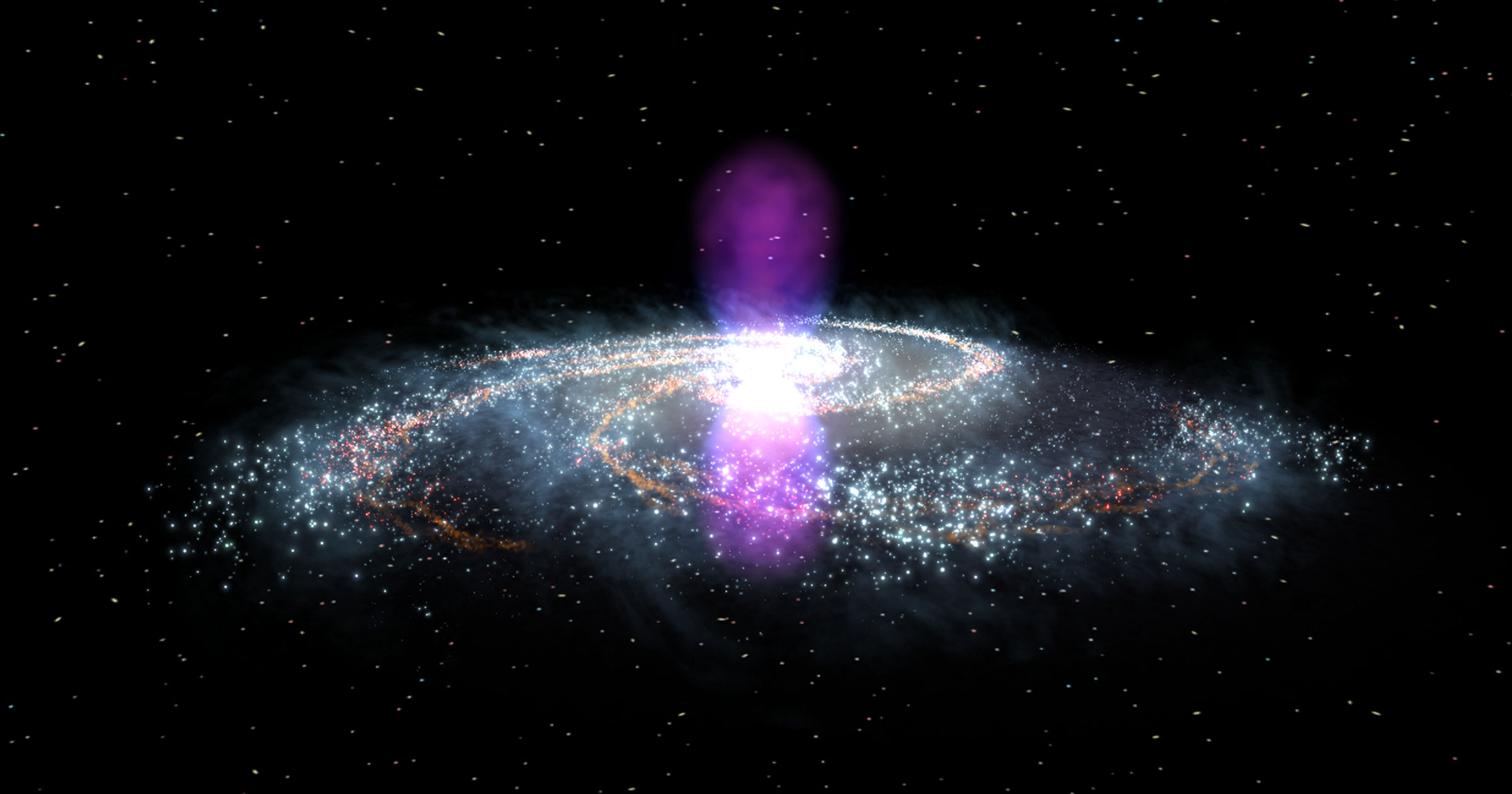Science
Astronomers Investigate Gamma Ray Glow at Milky Way’s Core

A mysterious glow of gamma rays originating from the center of the Milky Way has left astronomers grappling with two competing theories. According to a recent study published in the journal Physical Review Letters, the light may either result from dark matter particles colliding or from rapidly spinning neutron stars known as pulsars. While the paper does not favor one theory over the other, it underscores the significance of the findings: confirming the existence of dark matter, believed to constitute more than 26 percent of the universe, would represent a monumental breakthrough in astrophysics.
Coauthor Joseph Silk, an astronomy professor at Johns Hopkins University, emphasized the importance of detecting dark matter. “Dark matter dominates the universe and holds galaxies together,” he noted. “It’s extremely consequential, and we’re desperately thinking of ideas on how we could detect it.” He added that the excess gamma rays observed could serve as a crucial clue in identifying dark matter’s presence.
To investigate, Silk and an international team of researchers created a dark matter map based on theories about how the Milky Way formed. They hypothesize that billions of years ago, smaller galaxy-like systems of dark matter conglomerated at the center of what is now our galaxy, leading to increased collisions between these clumps. By simulating these interactions, the researchers found a remarkable overlap between their dark matter map and existing gamma ray data collected by NASA’s Fermi Gamma-ray Space Telescope.
Despite this intriguing correlation, the scientific community remains cautious. It is still possible that the glow stems from pulsars, rather than dark matter. Upcoming advancements in gamma ray observation may provide the clarity needed. The Cherenkov Telescope Array Observatory, an ambitious multinational project, aims to enhance understanding of gamma ray sources. With 60 telescopes situated in two locations—one on the Spanish island of La Palma and another in the Atacama Desert of Chile—the observatory is set to deliver higher resolution images that could pinpoint the origin of the enigmatic glow.
“A clean signal would be a smoking gun, in my opinion,” Silk stated regarding the potential findings of the Cherenkov Telescope Array. The team is also exploring other nearby dwarf galaxies to investigate dark matter distribution and its correlation with existing gamma ray maps.
Silk concluded with a hint of anticipation, “It’s possible we will see the new data and confirm one theory over the other. Or maybe we’ll find nothing, in which case it’ll be an even greater mystery to resolve.”
The quest to understand dark matter continues to captivate scientists, driving innovative research and exploration. As new data emerges, the astronomical community remains hopeful that clarity will finally shine through the cosmic enigma surrounding our galaxy’s heart.
-

 Science2 weeks ago
Science2 weeks agoIROS 2025 to Showcase Cutting-Edge Robotics Innovations in China
-

 Politics2 weeks ago
Politics2 weeks agoJudge Considers Dismissal of Chelsea Housing Case Citing AI Flaws
-

 World2 weeks ago
World2 weeks agoBravo Company Veterans Honored with Bronze Medals After 56 Years
-

 Top Stories2 weeks ago
Top Stories2 weeks agoIndonesia Suspends 27,000 Bank Accounts in Online Gambling Crackdown
-

 Lifestyle2 weeks ago
Lifestyle2 weeks agoStone Island’s Logo Worn by Extremists Sparks Brand Dilemma
-

 Health2 weeks ago
Health2 weeks agoStartup Liberate Bio Secures $31 Million for Next-Gen Therapies
-

 Sports2 weeks ago
Sports2 weeks agoMel Kiper Jr. Reveals Top 25 Prospects for 2026 NFL Draft
-

 Health2 weeks ago
Health2 weeks agoTop Hyaluronic Acid Serums for Radiant Skin in 2025
-

 World2 weeks ago
World2 weeks agoHoneywell Predicts Record Demand for Business Jets Over Next Decade
-

 Lifestyle2 weeks ago
Lifestyle2 weeks agoMary Morgan Jackson Crowned Little Miss National Peanut Festival 2025
-

 Politics2 weeks ago
Politics2 weeks agoNew Jersey Voters Urged to Register Ahead of November Election
-

 Sports2 weeks ago
Sports2 weeks agoYamamoto’s Mastery Leads Dodgers to 5-1 Victory in NLCS Game 2









